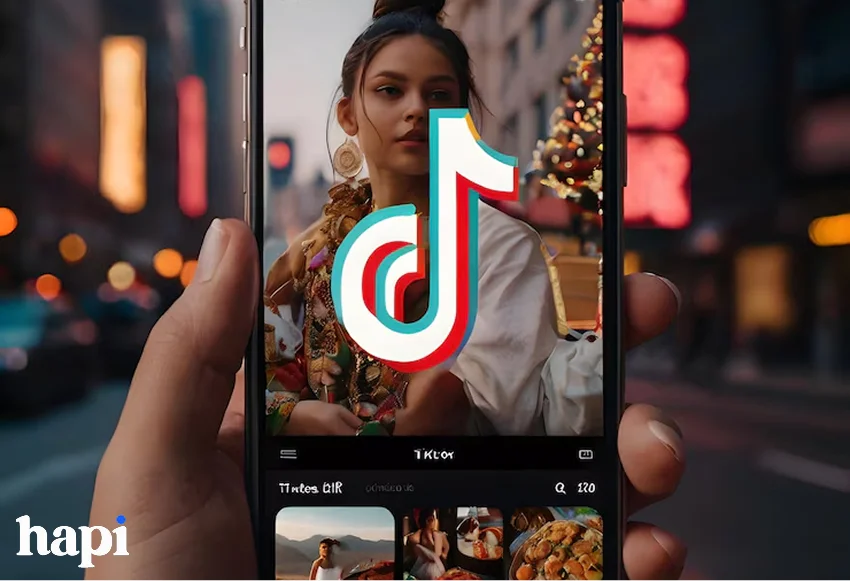
Introduction to Psychology-Driven Marketing Strategies

Have you ever rushed to buy anything because it was “almost sold out” or, on the other hand, felt good after purposefully removing yourself from social media? These experiences effectively highlight FOMO and JOMO, two potent psychological forces influencing modern consumer behavior.
Fear of Missing Out, or FOMO, is the constant feeling of concern that something great is happening somewhere else that motivates quick action. In the meantime, in an overstimulated world, JOMO, or the Joy of Missing Out, encourages deliberate detachment and conscious consumption.
As marketers, you can make your digital efforts more than just functional by understanding these conflicting psychological impulses. Using FOMO and JOMO concepts strategically can have a significant impact on your marketing performance, whether your goal is to build strong brand relationships or create a sense of urgency.
Let’s examine how these psychological strategies function and determine whether one would be more appropriate for your particular marketing objectives.
Understanding FOMO in Digital Marketing Landscape

How FOMO Triggers Consumer Purchasing Decisions
FOMO marketing is effective because it appeals to fundamental aspects of human nature. Customers’ decision-making process changes when they perceive time or availability restrictions. According to research, scarcity can increase a product’s worth by as much as 26%, making it seem more desirable just because it may soon become unavailable.
This psychological trigger leads to emotional reactions instead of logical thought. Not only are your clients purchasing goods, but they are also avoiding the regret that they would experience if they were to miss out. This strong anticipatory mood speeds up decision-making and decreases hesitancy to buy.
The continual connectedness of the digital world leads to FOMO. Your audience feels pressured to bridge the gap by making purchases when they witness others on social media enjoying events or goods.
5 Powerful FOMO Marketing Tactics That Drive Conversions
1. Limited-Time Offers: You may build visual urgency using countdown timers on your website or in email campaigns. These are successfully used by fashion shop ASOS, which displays the limited number of hours left before a sale finishes.
2. Using phrases like “Only 3 left in stock” or “95% booked” to display limited availability while providing social evidence is known as “scarcity messaging.” By showing inventory levels on product sites, Amazon has perfected this strategy.
3. Exclusive Access: Premium member-only goods, merchandise, or early-access chances help clients feel valued and encourage sign-ups. This tactic is best demonstrated by Spotify’s early access to concert tickets for premium customers.
4. User-Generated Content: Showing images of your clients using your goods or services makes aspirational content that makes people feel FOMO. GoPro thrives on this, featuring customer adventures that others want to experience.
5. Live Events with Time-Sensitive Value: Webinars, flash sales, or Instagram Live sessions that deliver value only during a specific window encourage immediate participation.
Real-World Examples of Successful FOMO Campaigns
Think about how, when you browse popular accommodations on Airbnb, the message “300 people are looking at this property right now” appears.
Nintendo brilliantly leverages FOMO by consistently under-producing new console launches. Their limited supply strategy creates media buzz, waiting lists, and even higher perceived value for their products.
Phrases like “while supplies last” are frequently included with Glossier product launches, along with user reviews that demonstrate the products’ beneficial effects. This combination of scarcity and social proof creates a powerful FOMO effect that regularly leads to sold-out products within hours.
Measuring the Effectiveness of FOMO-Based Marketing Strategies
Check these important metrics to see if your FOMO strategies are effective:
– Conversion rate changes during limited-time offers compared to regular periods
– Click-through rates on emails or ads containing scarcity messaging
– Time spent deciding before purchase (shorter decision time indicates effective FOMO)
– Social sharing rates of exclusive offers or limited-availability products
– Cart abandonment rates during time-sensitive promotions versus normal operations
Conduct A/B testing to measure the impact of FOMO-based messaging versus conventional marketing language. When used correctly, FOMO strategies can boost conversion rates by 30–50%, as many marketers find.
Exploring JOMO as an Emerging Marketing Approach

Why Consumers Are Embracing the Joy of Missing Out
The attitudes of consumers are changing. Many people are actively looking for a break from years of decision overload, social media burnout, and notification fatigue. Recent research indicates that 72% of customers value brands that respect their time and attention, whereas 65% of consumers say they feel overloaded with marketing communications.
Marketers have an opportunity as a result of this cultural change toward digital well-being. JOMO marketing positions your brand as genuine and respectful while acknowledging the need for space from your consumers. JOMO marketing prioritizes quality over quantity and mindfulness over impulse, as opposed to stimulating fear through scarcity.
This strategy is very popular with younger people. Gen Z customers are 25% more likely to interact with companies that prioritize conscious consumption and well-being above urgency and constant communication.
Creating Meaningful JOMO Marketing Messages That Resonate
To develop effective JOMO marketing, focus on these principles:
1. Emphasize quality and thoughtful consumption over accumulation. Highlight how your product enhances life rather than adding more noise.
2. Acknowledge digital fatigue directly in your messaging. Phrases like “Take a breather” or “You deserve some space” show empathy.
3. Create content that encourages presence rather than constant engagement. This could include mindfulness tips related to your product category.
4. Highlight the benefits of selective choice rather than trying everything. Position your offering as the carefully curated option worth focusing on.
5. Design email campaigns and social content with breathing room, using more white space and fewer calls-to-action per message.
3 Ways JOMO Marketing Builds Stronger Brand Loyalty
1. Trust Through Respect: By not bombarding customers with urgent messages, you demonstrate respect for their time and attention. This builds fundamental trust that leads to 40% higher customer retention rates.
2. Alignment With Personal Values: When your marketing acknowledges the need for balance, you align with consumers’ growing desire for mindful consumption. This values alignment creates emotional connection that transactional relationships can’t match.
3. Decreased Decision Fatigue: A more pleasurable shopping experience is produced by streamlining options and lowering pressure. Customers may be up to 28% more likely to make repeated purchases if they link your business with this favorable emotion.
Case Studies: Brands Successfully Implementing JOMO Strategies
The “Don’t Buy This Jacket” ad by Patagonia is a prime example of JOMO marketing. They strengthened their environmental positioning and gained trust by urging customers to fix their current items rather than purchasing new ones. In fact, this unconventional strategy enhanced customer loyalty and increased sales by 30% in the following quarters.
Headspace, the meditation app, structures its entire marketing around JOMO principles. Their messaging focuses on the benefits of taking breaks from technology, while positioning their product as the thoughtful exception worth your time. They reached over 70 million downloads because of this strategy.
Comparing FOMO vs. JOMO: Key Differences and Applications

Target Audience Considerations for FOMO and JOMO Campaigns
Your audience demographics significantly impact which approach will resonate better:
FOMO typically works better with:
– Impulse purchasers
– Status-conscious consumers
– Early adopters who enjoy being first
– Younger audiences highly engaged with social media
– Consumers in competitive markets (fashion, technology, limited editions)
JOMO typically resonates with:
– Value-driven customers focused on quality over quantity
– Wellness-oriented consumers
– Minimalists and conscious consumers
– Those experiencing digital fatigue
– Customers seeking authentic brand relationships
Consider surveying your audience about their purchasing motivations to determine which approach might work best.
When FOMO Creates Urgency and Drives Immediate Action
FOMO marketing excels when your goals include:
– Clearing inventory quickly
– Meeting short-term sales targets
– Creating buzz around product launches
– Driving immediate sign-ups or registrations
– Boosting engagement during specific time windows
Travel booking websites, for instance, make great use of FOMO by displaying the number of individuals looking at the same hotel or the rate at which rates are increasing. During periods of high demand, this strategy can boost booking conversions by as much as 50%.
How JOMO Marketing Fosters Authentic Customer Relationships
JOMO strategies work particularly well for:
– Subscription-based businesses seeking long-term retention
– Premium brands focused on quality over quantity
– Products related to wellness, mindfulness or self-care
– Brands with strong sustainability or ethical positions
– Services that help simplify customers’ lives
Meditation apps like Calm excel with JOMO marketing. Their messaging emphasizes taking breaks from digital noise, while positioning their product as the mindful exception worth your attention. This approach helped them achieve over 100 million downloads and strong subscriber retention.
Balancing Both Approaches in Your Marketing Mix
The most effective strategy often combines elements of both approaches. Consider this balanced framework:
1. Segment your audience based on their psychological motivations, serving FOMO content to those who respond to urgency while providing JOMO messaging to those seeking mindfulness.
2. Adjust your approach based on the purchase stage. When consumers are prepared to make a purchase, FOMO can successfully increase conversions, while JOMO is best for brand awareness and loyalty.
3. Consider product category appropriateness. Luxury or wellness products typically align better with JOMO, while trendy or limited-availability items naturally suit FOMO tactics.
4. Test both approaches across different channels. While social media material might connect more with an intention, JOMO-focused message, might work better with urgency.
7 Factors to Consider When Choosing Between FOMO and JOMO

Your Brand Values and Positioning in the Market
Your existing brand personality should guide your psychological approach. Premium products focusing on quality already connect with JOMO’s emphasis on deliberate consumption. Conversely, brands that emphasize innovation or trendiness might gain more from FOMO strategies.
Ask yourself: Would urgency-based messaging contradict your brand voice? Does your audience expect a certain tone from you? Consistency between your overall brand positioning and psychological marketing approach increases effectiveness by up to 35%.
Customer Demographics and Psychological Profiles
Different demographic groups respond distinctly to FOMO and JOMO approaches:
– Gen Z shows 28% higher engagement with authentic JOMO messaging compared to millennials
– Higher-income segments respond 40% more positively to exclusive access (FOMO) than discount-driven urgency
– Urban consumers show 35% more sensitivity to FOMO triggers than suburban audiences
– Parents are 45% more responsive to JOMO messaging that acknowledges their time constraints
Create customer personas that include psychological motivations, not just demographic information, to guide your approach selection.
Campaign Goals: Short-Term Sales vs. Long-Term Engagement
Your specific campaign objectives should heavily influence your psychological approach:
Short-term goals better served by FOMO:
– Meeting quarterly sales targets
– Launching new products quickly
– Driving event registrations
– Clearing seasonal inventory
Long-term goals better aligned with JOMO:
– Building community around your brand
– Increasing customer lifetime value
– Establishing thought leadership
– Strengthening brand loyalty and advocacy
The most sophisticated marketers plan their psychological approach calendar, implementing FOMO tactics strategically during key sales periods while maintaining JOMO-based relationship building throughout the year.
Industry-Specific Considerations for Psychology-Based Marketing
Your industry context significantly impacts which approach works best:
Industries where FOMO typically excels:
– Travel and hospitality (limited availability)
– Fashion and trendy consumer goods
– Event ticketing and entertainment
– Technology product launches
– Limited edition collectibles
Industries where JOMO often works better:
– Health and wellness products
– Sustainable and ethical goods
– Financial services focusing on security
– Home goods emphasizing comfort
– Educational content and services
Implementing Psychology-Driven Marketing Effectively

Creating Compelling FOMO Messaging Without Manipulation
Effective FOMO marketing creates urgency without crossing ethical lines. Follow these principles:
1. Be truthful about limitations. Only claim limited availability when it’s genuine. Fabricated scarcity damages trust when discovered.
2. Provide real value behind the urgency. Your offer should stand on its merits, with scarcity as a secondary motivator.
3. Set reasonable timeframes that give customers adequate decision time. Extremely short deadlines can trigger anxiety rather than positive urgency.
4. Include clear information alongside scarcity messaging. Never use urgency to distract from important product details.
5. Avoid targeting vulnerable audiences with high-pressure tactics. Consider your customers’ financial and emotional wellbeing.
Developing Authentic JOMO Content That Adds Value
Quality JOMO marketing requires a genuine commitment to customer wellbeing:
1. Create content that helps customers simplify decision-making rather than adding complexity.
2. Respect attention by being concise. Edit ruthlessly to deliver maximum value in minimum time.
3. Focus on how your product enhances life rather than becoming another demand on time and attention.
4. Consider how your marketing delivery itself demonstrates JOMO principles. Less frequent, more valuable communications often outperform constant engagement.
5. Highlight the quality of experience your product provides rather than quantity of features or options.
How to Test and Optimize Your Psychological Approaches
Implement these testing methods to refine your psychological marketing:
1. A/B test email subject lines comparing FOMO language (“Last chance: Offer ends tonight”) against JOMO messaging (“Take your time: Quality worth considering”).
2. Create segment-specific landing pages with different psychological approaches and measure conversion rates.
3. Survey customers about their emotional response to different marketing messages to understand psychological impact beyond metrics.
4. Monitor social sharing patterns to see which approach generates more organic amplification.
5. Track not just conversion rates but return rates to determine if urgency-driven purchases lead to satisfaction or regret.
Ethical Considerations in Emotion-Based Marketing Strategies
As you implement psychological marketing, consider these ethical guidelines:
1. Transparency builds trust. Be honest about why products are limited or why offers are time-sensitive.
2. Respect vulnerability. Avoid targeting psychologically vulnerable audiences with high-pressure tactics.
3. Consider long-term relationship impacts. Short-term gains from manipulative FOMO can damage lasting customer relationships.
4. Provide genuine value regardless of which psychological approach you use. Your product should deliver on promises made through emotional marketing.
5. Monitor customer feedback for signs that your psychological approaches are creating anxiety rather than positive motivation.
The Future of FOMO and JOMO in Digital Marketing

Emerging Trends in Consumer Psychology and Marketing
The psychological marketing landscape continues evolving:
1. Personalized psychological approaches will become more sophisticated. AI will help determine which customers respond better to FOMO versus JOMO messaging.
2. Hybrid models combining elements of both will emerge as customers seek balance between connection and space.
3. Context-aware psychological marketing will adapt messaging based on customer circumstances, showing urgency only when appropriate and respecting boundaries otherwise.
4. Transparency about psychological techniques will become expected as consumers grow more marketing-savvy.
5. Ethical frameworks for emotional marketing will develop as the industry recognizes the responsibility that comes with psychological influence.
How Technology Changes Will Impact Psychology-Based Marketing
Evolving technology will transform how we implement psychological marketing:
1. AR/VR experiences will create new forms of FOMO based on immersive branded environments.
2. AI personalization will match psychological approaches to individual customer preferences with unprecedented precision.
3. Digital wellness tools will increasingly filter out manipulative marketing, requiring brands to develop more respectful approaches.
4. Voice and ambient computing will change how urgency and thoughtfulness manifest in marketing messages.
5. Blockchain transparency may eventually allow customers to verify scarcity claims, increasing accountability for FOMO marketing.
Preparing Your Brand for Evolving Consumer Mindsets
To stay relevant as psychological marketing evolves:
1. Develop sensitivity to shifting cultural attitudes around digital wellness and attention economy ethics.
2. Build flexibility into your marketing systems to easily switch between psychological approaches as needed.
3. Invest in better customer understanding beyond demographics to include psychological motivations and emotional needs.
4. Train marketing teams on both approaches so they can implement either effectively when appropriate.
5. Establish ethical guidelines specific to your brand regarding the use of psychological marketing techniques.
Conclusion: Finding Your Perfect Marketing Psychology Balance
The optimal psychological marketing strategy doesn’t involve choosing between FOMO and JOMO; rather, it involves learning to recognize when both are most beneficial to your clients and company. Understanding the psychological factors that influence consumer choices will help you develop marketing that appeals to a wider audience.
Keep in mind that your clients are complicated people with different demands for both calmness and excitement. The brands that will thrive are those that respect this complexity rather than relying exclusively on either urgency or mindfulness.
Start by testing both approaches with small segments of your audience. Track long-term engagement and client satisfaction in addition to quick conversions. Your psychological marketing plan should be guided by the data, but ethical considerations should always come first.
By carefully applying the concepts of FOMO and JOMO as necessary, you can create a marketing strategy that respects the people who make every click, view, and buy while producing results.


